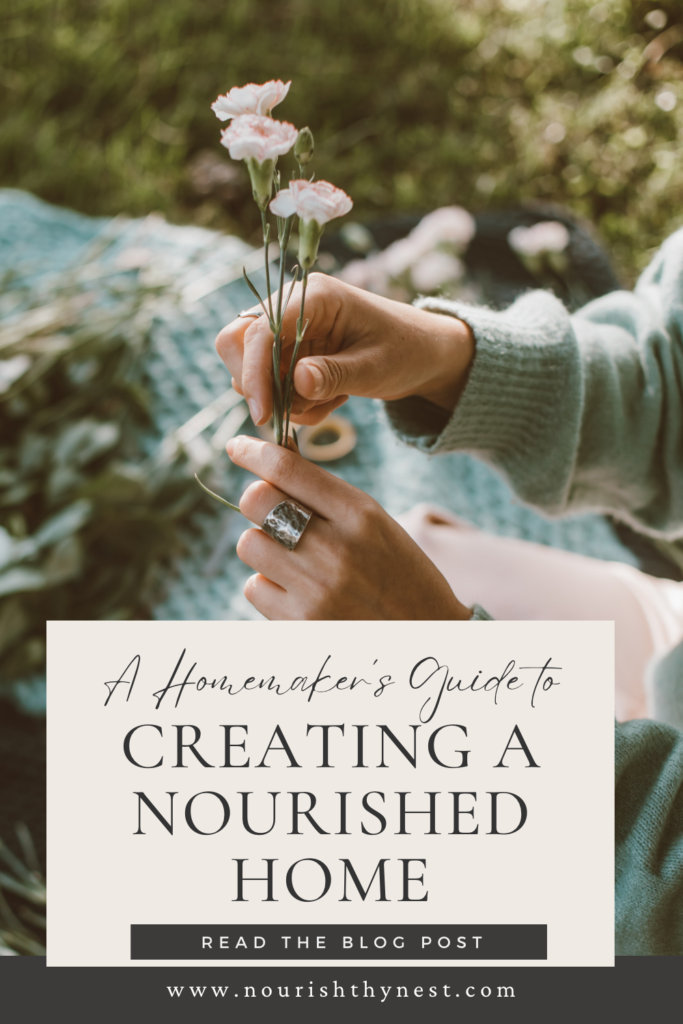
**This blog is reader supported, and some of the links in this post are affiliate links, meaning, at no additional cost to you, I will earn a commission if you click through and make a purchase. As an Amazon Associate I earn from qualifying purchases**
Over the last few years I have connected with SO many parents who are simply exhausted by modern living, and who are looking for ways they can simplify their lives, deepen their connection with their loved ones, and experience a sense of wholeness.
Because we are exhausted.
We have too much on our plate.
It’s too noisy, and busy.
We are fed up with it.
The pace of our modern world has become so fast and disconnected, that to many of us, it is increasingly vital that we put our focus on creating a more nurturing and nourishing home environment however we can to transform the culture of busy-ness that has reigned for decades.
This is an earnest aspiration for many families, including ours.
We all seem to be seeking a more nourishing life experience.
Exploring what this means in our own home, and all that we have learned on our journey has been my whole inspiration of this blog in fact!
So let’s dive in to what it means to build such an environment in your own home, and why it’s so important…
I will offer insights into how to achieve a more nourishing environment for yourself and your family by combining several methods that have formed the foundation of what has helped our family, borrowed from following the Waldorf educational method, peaceful parenting, and the slow living movement.
Also, as we move through what it takes to create this kind of environment, please remember that it takes time.
Start slow, choosing one change that really speaks to you to begin with, and incorporate that before adding other changes.
Whatever you do, don’t do it all at once! Families need time to adjust, and so do you.
Understanding the Essence of a Nourishing Home Environment

A nourishing home environment is more than just physical comfort; it’s a space that promotes the holistic well-being of all family members. Here’s a glimpse of what it embodies:
- Love and Connection: A nurturing home is grounded in love and fosters strong emotional bonds among family members. It’s a safe space for open communication and affection.
- Harmony and Calm: Peaceful coexistence is key. A nourishing home reduces stress and promotes calm through rituals, rhythms, and a warm and inviting living space.
- Learning and Creativity: Encourage curiosity and creativity. A home environment should provide ample opportunities for learning, growth, and self-expression.
- Healthy Living: Prioritize physical and mental health. A nourishing home promotes balanced nutrition, exercise, a regular mindfulness or spiritual/religious practices, and/or time spent outdoors in nature.
Infusing Waldorf Principles into Your Home
Waldorf education, founded by Rudolf Steiner, focuses on the holistic development of children. Even if you are not inspired to adopt the whole pedagogy, there are some wonderful elements within it that help to establish balance, beauty, peace, and calm within your home.
Here are a few simple Waldorf-inspired methods you may wish to integrate into your family life:
- Natural Materials: Use wooden toys, natural fabrics such as wool and cotton, and a collection of seasonal objects gathered from your time in nature, such as stones, acorns, driftwood, shells, and pinecones. These materials, collected by children in the natural world, inspire and stimulate their imagination! They may build a pinecone forest out of them for their wooden animal toys, or a fairy house for their handmade fairy dolls (tutorial with video for this simple craft here)
- Rhythms and Rituals: Establish daily, weekly, and seasonal rhythms that provide predictability. Daily rituals like mealtime blessings or bedtime stories create a sense of stability, and doing regular weekly activities together like baking, crafting/handwork, and painting provide what I call “anchor points” for the whole family throughout their week. Also including a few special activities that correspond to the season that you are in also serve to anchor your family within the circle of the year. (Read my detailed guide to creating these rhythms here)
- Artistic Expression: Creating time and space for regular arts and crafts. Encourage your children to explore their artistic abilities, promoting creativity and self-expression. Preparing a special area of your home is great if you have then space, but it is not necessary. We do ours at our kitchen table, and I have a cabinet where I keep our supplies and just pull them out as needed.
- Regular time outside in nature: Nature bathing, also known as forest bathing or shinrin-yoku, offers profound benefits for families seeking to reconnect with each other and with the natural world. In today’s technology-driven society, carving out time to immerse oneself in nature is more important than ever. For families, nature bathing provides an opportunity to escape the distractions of daily life and bond in a serene environment. Whether it’s exploring a nearby park, hiking through a forest, or simply enjoying a picnic by a lake, spending time in nature promotes physical activity, reduces stress, and fosters a sense of wonder and curiosity in children and adults alike. Moreover, nature bathing encourages mindfulness, allowing families to fully engage their senses and appreciate the beauty and tranquility of the outdoors. By prioritizing regular nature outings, families can cultivate a deeper connection with each other and with the natural world, leading to happier, healthier, and more nourishing life experiences.
- Minimizing screens as much as you can: In today’s digitally driven world, where screens are ubiquitous, it’s increasingly beneficial for families to be mindful of their screen time. Excessive screen exposure can have detrimental effects on various aspects of family life, including physical health, mental well-being, and interpersonal relationships. Limiting screen time allows for more meaningful face-to-face interactions, fosters creativity, encourages outdoor play, and promotes better sleep hygiene. By prioritizing quality time away from screens, families can strengthen bonds, nurture healthy habits, and create a balanced lifestyle that prioritizes real-world experiences over virtual ones. That said, I know it’s so easy to say and so hard to do! Take time with this change, and slowly reduce screen time by replacing it with one other activity week by week. Once your family starts to get out of the habit of screens, you will likely notice that they actually prefer to spend connected, creative time with the you rather than glued to a screen. This has even proven true with our teenager!

The Art of Peaceful Parenting
Peaceful parenting is an approach to raising children that emphasizes empathy, communication, and nonviolent conflict resolution. At its core, peaceful parenting rejects punitive discipline in favor of understanding and addressing the underlying needs and emotions of the child. It focuses on fostering a nurturing and respectful environment where children feel safe to express themselves and learn from their mistakes without fear of harsh punishment.
Peaceful parents prioritize positive reinforcement, active listening, and setting clear boundaries based on mutual respect rather than authoritarian control.
By nurturing a peaceful atmosphere at home, parents can cultivate strong, trusting relationships with their children and empower them to become compassionate, confident individuals capable of navigating life’s challenges with resilience and empathy.
This area requires some more in-depth study for many parents before they can implement the practices into their home.
I highly recommend the book Peaceful Parent, Happy Kids by Dr. Laura Markham. Her methods have worked wonders in our home!**
She also offers a wealth of free information on her website ahaparenting.com and in her newsletters, which are a good, free alternative to buying her book.
I have taken her Praceful Parenting course for parents, and because of how well her approach worked in our home, I am currently working towards becoming a certified Peaceful Parenting Educator through her professional program so that I can share these methods more effectively with other parents.
Here are some practices you can incorporate into your household to get started, and I highly encourage you to visit Dr. Laura’s website for more:
- Effective Communication: Practice active listening and open dialogue. When children feel heard and respected, they’re more likely to communicate openly.
- Positive Discipline: Choose non-punitive approaches like natural consequences, or gentle logical consequences, such as if a child throws a toy in anger you could say “it looks like you must be feeling pretty angry and sad right now… it’s ok to feel that way. I’m going to put your toy away to keep it safe today, and we can try again tomorrow. Would you like a hug or a snuggle and maybe a few minutes to read a story together now instead?” These teach valuable lessons without causing fear. There are so many more examples of this in the book I mentioned.
- Emotional Regulation: Model emotional regulation for your family, demonstrating healthy ways to handle emotions. When you start to feel upset, take a moment to notice the sensations in your body, and breathe for a few moments. Walk away if you need to, but always let your children know that you just need a moment to breathe and you will be right back. Positive self-talk is powerful here, reminding yourself that this is not an emergency even though it feels like one. Then, look for the message in your anger, sadness, or fear. Ask yourself if there is anything you could do to help yourself in that moment. Perhaps a drink of water, listening to a song you enjoy, or stepping outside for a breath of fresh air? Rejoin your family after you feel calmer, and then address the situation using the positive communication and discipline suggested previously.
- Practice Empathy: Empathy is the most powerful tool you have for creating a more nourishing and connected home. To cultivate empathy, try to see things from the perspective of others, and especially your spouse and children. Acknowledging and validating their feelings and needs, even when you don’t agree builds trust and thus a much deeper feeling of connection between you. And when people feel more connected, they are able to problem solve together and work through difficult emotional experiences.
- Build Connection through play: Yep, this one is very hard for many parents, but it is powerfully rewarding. You must play with your kids, at least a little bit every day. Even 10 minutes makes a huge difference! When you stop and make time to play with your kids, and let them run the show (within reasonable safety limits of course) for just short while it feeds them and nourishes their hearts as much as a nutritious meal feeds their bodies.

Embrace The Slow Life
I previously wrote a blog post specifically about this practice because it is an essential component of building a Nourished Home. Read it here.
Slow Living is the powerful practice of doing less, however and whenever possible, of letting go of the clutter of too many material possessions, and simplifying life to a point where it feels more manageable.
This practice is often referred to as The Slow Living Movement, and is gaining popularity for very good reasons.
It’s the perfect antidote to our modern culture, which is obsessed with productivity and achievement….Often at the cost of our health, well-being, and loving, supportive connections with family and friends!
Many of these practices tie into the areas we discussed previously in this post, but here are some steps to take to create a slower and more nourishing life… life of meaning, and connection:
- Prioritize What Matters: Identify your core values and priorities as a family. Focus your time and energy on activities and experiences that align with these values.
- Set Realistic Goals: Instead of overloading your schedule, set achievable goals that allow for flexibility and enjoyment.
- Unplug Regularly: Designate tech-free times or areas in your home to promote genuine connections with loved ones.
- Practice Mindfulness: Incorporate mindfulness practices such as prayer (if religious), meditation, deep breathing, or yoga into your daily routine to stay present.
- Simplify Your Home: Declutter your living spaces, creating a serene environment that reduces distractions and promotes relaxation.
- Cook and Eat Together: Share the joy of preparing and enjoying meals as a family. This fosters connection and healthier eating habits.
- Limit Extracurricular Activities: While extracurricular activities are valuable, don’t over-schedule your family. Balance is key to a slower life.
- Nature Breaks (aka “Nature Bathing”): Spend time in nature regularly. Nature has a calming effect, and improves focus and attention.
- Follow A Family Rhythm: A Family Rhythm is a more intentional and relaxed way of following a schedule that allows for movement within it, rather than a strict set of times and activities to adhere to. Learn more here
- Practice Gratitude: Encourage a culture of gratitude within your family. Expressing appreciation for one another enhances positivity and relationships.
- Learn to Say No: It’s okay to decline invitations or commitments that don’t align with your slow living goals. Saying no frees up time for what truly matters.
Harmoniously Blending All Principles
Combining Waldorf wisdom, peaceful parenting, and the practice of slow living can create a truly nourishing home environment, one that fosters love, harmony, and well-being.
Adapt these principles to your family’s unique needs, cultivating a space that nurtures emotional growth, creativity, and overall wellness.
In doing so, you’ll create a haven where your family thrives and flourishes.
Here’s to living your most nourishing life, today and everyday!
**Disclosure: I was not paid for this recommendation, but I will earn a small commission from Amazon if you purchase Dr. Laura’s book by clicking the link provided.

